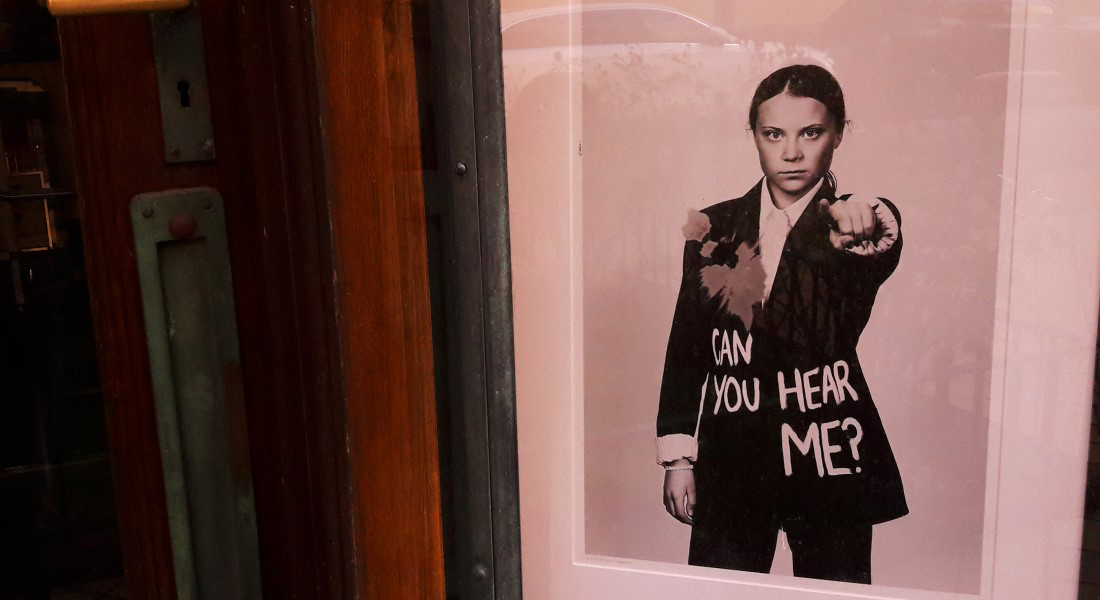When do images rally support for political movements – or the opposite?
Focusing on the climate movement in Europe, a new international project will analyse how visual content creates public support, but also opposition and polarisation. Researchers from the Department of Sociology will be in charge of ‘distilling’ and decoding many thousands online images.

Photos and other images shared online are powerful tools of communication that provoke emotions and influence our perception of political issues. The depiction and use of Greta Thunberg as an icon for the climate movement is one of many examples.
But how and why is visual content becoming a trigger for political engagement or polarisation on the issue of climate politics? And what are the consequences when polarising images like, for example, photos or memes of Greta Thunberg spread in highly digitalised societies?
These are central questions in a new international research project, PolarVis. It uses the climate justice movement as a case study for understanding visual political communication through photographs, pictures, videos and memes published on the internet. Involving the UCPH Department of Sociology and other partners, the project will analyse how such online images create political support or resentment.
“Ideally, we hope to identify the 5-10 images that in recent years have had the strongest impact on the climate discussion in Scandinavia, Europe, and globally. Would it be the infamous image of six dead giraffes on the savannah? The depictions of Greta Thunberg? Or visual content showing burning forests or a globe in flames? Just as important, the project will study how people, political parties and counter-movements react to such images,” says Associate Professor Nicole Doerr, who is directing the Centre for Political Mobilisation and Social Movements at the Department of Sociology.
Harvesting social media platforms
Heading one of the multifaceted project’s branches, she and colleagues from the department will be responsible for decoding, analysing, and ‘distilling’ thousands of online images based on an even larger pre-processed sample harvested on Twitter, Facebook, Instagram, and YouTube.
Such analyses involve looking deeper into how the images are framed online and the specific visual narratives they embed.
“We want to know more about how climate activists work with digital media to produce visual content,” Doerr explains. “How they, for example, visualise scientific knowledge, but also how ‘moral shocks’ work in terms of engaging people in protest or civic engagement. Can we still be shocked by certain visual content in this field, or are we generally getting more shouty and even nasty on social media when we post images on climate change?”
Focus on dissemination
The project is supported through the EU funded Norface Chanse programme and runs until 2025. It will try to answer four key questions – in short:
- How do social movements and counter-movements use visual content in their online communication?
- What are the characteristics of such visual content?
- What is the public response to the images?
- How is the content spread online supporting clusters of like-minded actors or opposing groups?
We should all be more aware how pictures affect us.
Moreover, the project puts emphasis on disseminating its findings through workshops and the development of guidelines for civil society groups, educators, and institutions interested in understanding how a broader public – people who are not part of a political ‘bubble’ – change their political ideas or behaviour. That could be on issues such as green transition, energy politics, and the costs of transitioning to a green economy.
Ultimately, Nicole Doerr hopes that many of us will learn from the project.
“We should all be more aware how pictures affect us. Becoming more critical and conscious of how we react to visual communication strategies that we are exposed to on our smart phone or on television is important.”
Contact
Nicole Doerr
Associate Professor
Department of Sociology/Copenhagen Centre for Political Mobilisation and Social Movement Studies
Email: nd@soc.ku.dk
Telephone: +45 35 33 50 57
--
Søren Bang
Journalist
The Faculty of Social Sciences
Email: sba@samf.ku.dk
Mobile: +45 29 21 09 73
